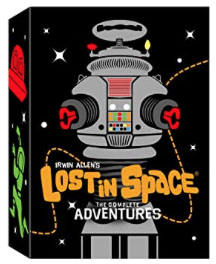 |
 |
 |
 |
 |
||
|
by Billy Ingram
Radio broadcaster, motion picture star, TV host and former President of the United States Ronald Wilson Reagan understood as well as anyone how that related to politics - how a nod of the head or a defferential pause can project a relaxed style and make your opponent look stiff. That's part of what made him one of the great communicators of all time. Politicians by the score have emulated Reagan's folksy, 'aw-shucks' style but no one has mastered it in quite the same way.
In today's relentless media Whurlitzer, a politician can gain experience in front of the camera in any number of ways - C-SPAN, cable and local TV news programs, for example. But in the sixties, no politico had (or could hope to have) the public face time that Ronald Reagan enjoyed. THE TV YEARS
That was the same year the FBI visited the Reagans, accusing them of having Communist Party affiliations. The actor agreed to become an informant and testify as a friendly witness before the House Un-American Activities Committee. This was the height of the Hollywood blacklist era and Ronald Reagan was proud to turn names of suspected Hollywood communists over to the FBI; he and others fought vociferously against what they saw as "communist-like activity" in the entertainment industry.
A Ronald Reagan political speech from 1948 in which he sounds like a modern day liberal.
As president of the actor's union, he came under government scrutiny after signing a secret, exclusive waiver for MCA (the talent agency that represented him) to produce television programs in 1952 - this despite laws against agencies employing their own clients. The FBI in tandem with the Justice Department investigated; both MCA and the Screen Actors Guild were charged with violatiing federal antitrust laws while Reagan himself narrowly avoided prosecution.
A landmark television production, General Electric Theater broadcast some of the finest dramas of TV's early days, with big-event performances by major film stars who rarely appeared on the small screen, including James Stewart, Bette Davis, Myrna Loy, Joan Crawford and Gene Tierney. GE wisely positioned Ronald Reagan as their respected TV spokesperson and corporate ambassador - essentially casting him in a role that would propel him all the way to the White House. GE Theater rose to the third most popular show in 1956 and stayed locked in the top twenty for most of its run, with a quarter of the nation's TVs tuning in each week. During the series' eight-year run, Reagan made hundreds of personal appearances around the country on GE's behalf. There was even an LP for sale in record stores, Themes from the GE Theater, with a smiling Ronald Reagan front and center on the cover.
Between the years 1950 - 1964, Ronald Reagan had been a guest actor on dozens of dramatic anthology programs like Ford Theater, Schlitz Playhouse of the Stars and Kraft Suspense Theater, in addition to a rare regular series appearance on Wagon Train in 1963.
NEXT: PART
TWO Ronald Reagan part one Ronald Reagan on Television Ronald Reagan in Advertising |
Ronald
Reagan TV Shows
Ronald Reagan TV Shows - part 2 here DID YOU KNOW: Ronald Reagan and his wife Nancy appeared together on GE Theater in an episode called 'A Turkey for the President.'
|
|
 |
 |
 |
 |
 |
 |
 |
||||||
TV Shows on DVD/ / / / / TV Blog/ / / / / Beyond Our Wildest Dreams/ / / Holiday
Specials on DVD / /
/ / / / Classic
Commercials |
||||||||||||
|
||||||||||||||
Save money! |